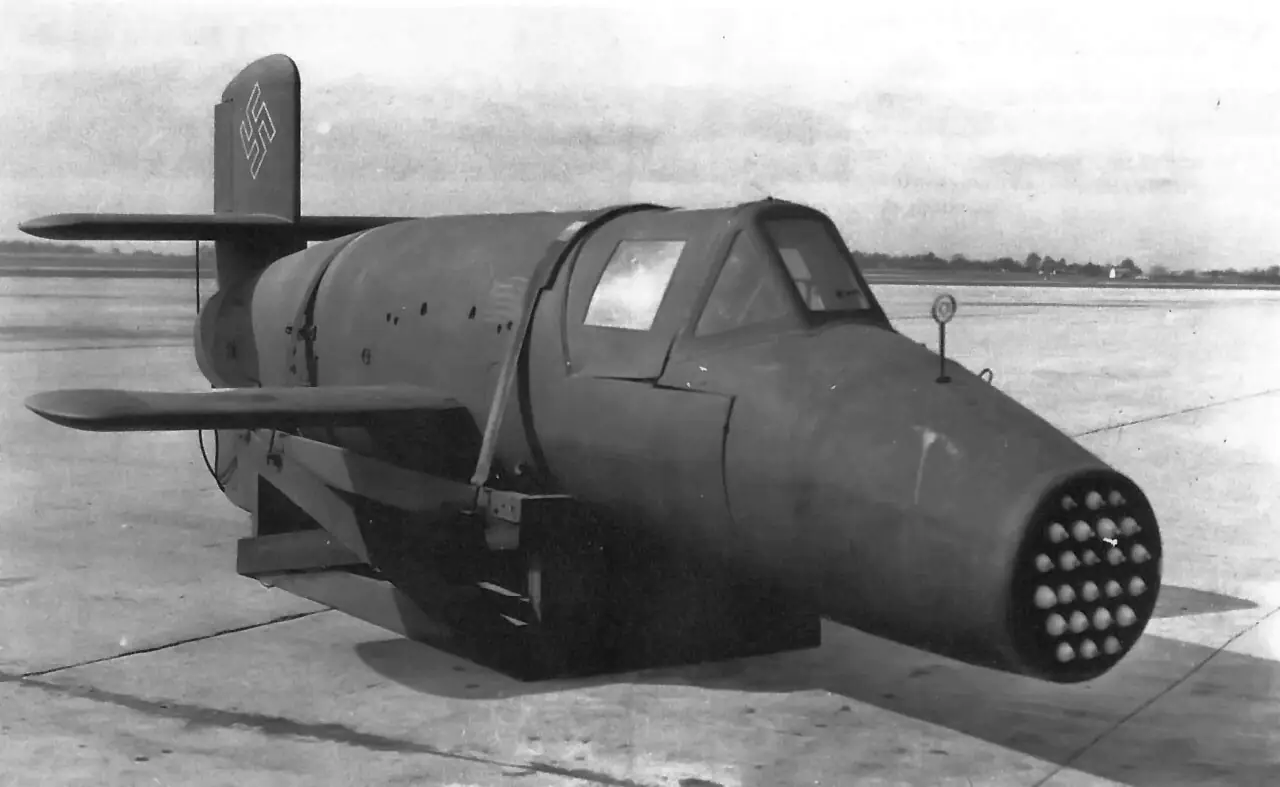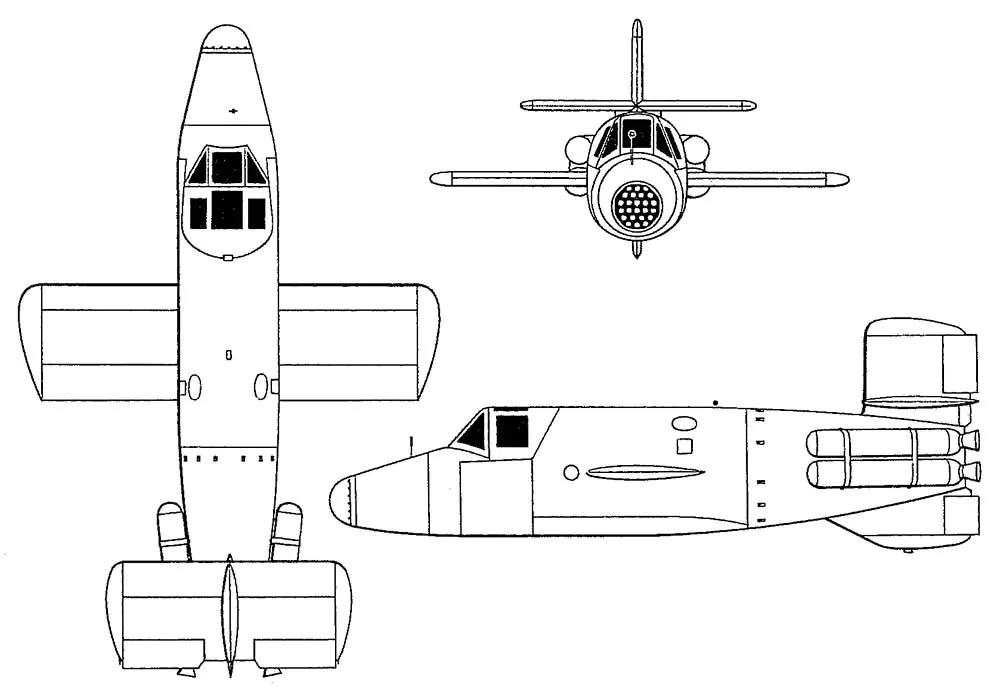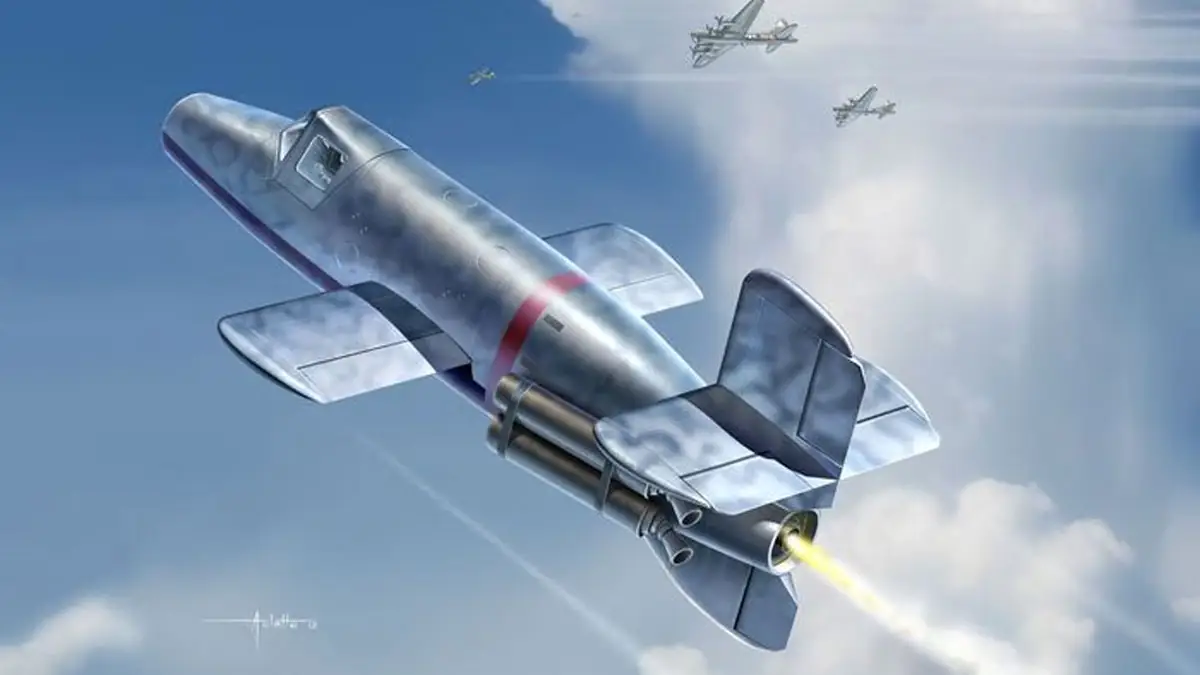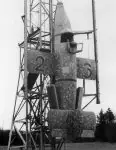The design of the Ba-349A “Natter” (Viper) began in August 1944 by the Bachem company. The goal of the project was to create a cheap, one-time-use interceptor fighter to counter the massive air attacks by the anti-Hitler coalition bombers against Germany in the late stages of World War II.

The aircraft was equipped with a Walter HWK 109-509A liquid-fuel rocket engine, which ran on a two-component fuel. It was launched from a nearly vertical catapult about 24 meters long. Takeoff was assisted by four solid-fuel boosters mounted on the sides of the rear fuselage.
The armament of the Bachem Ba-349A Natter included either 33 unguided R4M rockets or 24 “fan” projectiles. Initially, targeting of the interceptor at bombers was to be controlled from ground stations via radio commands. However, within the enemy’s line of sight, the pilot was expected to manually aim the aircraft at the target, fire the rockets, and then eject from the aircraft with a parachute. Simultaneously, the engine was designed to detach from the fuselage and also descend to the ground with a parachute, allowing for its potential reuse.
The Ba-349A aircraft made its first unmanned flight on December 18, 1944, without its main liquid-fuel rocket engine. The aircraft was launched using solid-fuel boosters. In total, ten such flights were conducted. On February 25, the Ba-349A was launched with the liquid-fuel rocket engine installed but without a pilot. Subsequently, a piloted flight was attempted, but the aircraft was destroyed during testing.
Read also: “Invisible” Aircrafts: How Stealth Technology Works in Aviation

Main specifications of Bachem Ba-349A Natter:
- Takeoff weight: 2180 kg
- Maximum speed: 865 km/h
- Climb rate: 182 m/s
- Flight duration: 2 min
- Length: 6.5 m
- Wingspan: 3,95 м
- Wing area: 4.8 m
A second variant of the aircraft, the Ba-349B, was built to achieve a longer flight duration. The Ba-349B was powered by a Walter HWK 109-509D liquid-fuel rocket engine with a cruising combustion chamber. With the engine running, this variant had a flight duration of 4.36 minutes, a maximum speed of 1000 km/h at an altitude of 5000 meters, and a climb rate of 190 m/s.
In May 1945, Allied forces discovered several unfinished “Natter” aircraft in a field near St. Leonhard, Austria.
The Natter project was never developed into mass production, as World War II ended in 1945 with the defeat of Nazi Germany. Several built and unfinished aircraft and launch platforms were captured by Allied forces and transported to the United States for examination. They eventually became exhibits in aviation museums.
Read also:















